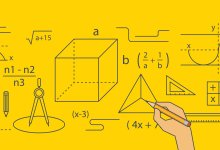Using Mathematical Modeling to Get Real With Students
Unlike canned word problems, mathematical modeling plunges students into the messy complexities of real-world problem solving.
Your content has been saved!
Go to My Saved Content.How do you bring math to life for kids? Illustrating the boundless possibilities of mathematics can be difficult if students are only asked to examine hypothetical situations like divvying up a dessert equally or determining how many apples are left after sharing with friends, writes third- and fourth- grade teacher Matthew Kandel for Mathematics Teacher: Learning and Teaching PK-12.
In the early years of instruction, it’s not uncommon for students to think they’re learning math for the sole purpose of being able to solve word problems or help fictional characters troubleshoot issues in their imaginary lives, Kandel says. “A word problem is a one-dimensional world,” he writes. “Everything is distilled down to the quantities of interest. To solve a word problem, students can pick out the numbers and decide on an operation.”
But through the use of mathematical modeling, students are plucked out of the hypothetical realm and plunged into the complexities of reality—presented with opportunities to help solve real-world problems with many variables by generating questions, making assumptions, learning and applying new skills, and ultimately arriving at an answer.
In Kandel’s classroom, this work begins with breaking students into small groups, providing them with an unsharpened pencil and a simple, guiding question: “How many times can a pencil be sharpened before it is too small to use?”
Setting the Stage for Inquiry
The process of tackling the pencil question is not unlike the scientific method. After defining a question to investigate, students begin to wonder and hypothesize—what information do we need to know?—in order to identify a course of action. This step is unique to mathematical modeling: Whereas a word problem is formulaic, leading students down a pre-existing path toward a solution, a modeling task is “free-range,” empowering students to use their individual perspectives to guide them as they progress through their investigation, Kandel says.
Modeling problems also have a number of variables, and students themselves have the agency to determine what to ignore and what to focus their attention on.
After inter-group discussions, students in Kandel’s classroom came to the conclusion that they’d need answers to a host of other questions to proceed with answering their initial inquiry:
- How much does the pencil sharpener remove?
- What is the length of a brand new, unsharpened pencil?
- Does the pencil sharpener remove the same amount of pencil each time it is used?
Introducing New Skills in Context
Once students have determined the first mathematical question they’d like to tackle (does the pencil sharpener remove the same amount of pencil each time it is used?), they are met with a roadblock. How were they to measure the pencil if the length did not fall conveniently on an inch or half inch? Kandel took the opportunity to introduce a new target skill which the class could begin using immediately: measuring to the nearest quarter inch.
“One group of students was not satisfied with the precision of measuring to the nearest quarter inch and asked to learn how to measure to the nearest eighth of an inch,” Kandel explains. “The attention and motivation exhibited by students is unrivaled by the traditional class in which the skill comes first, the problem second.”
Students reached a consensus and settled on taking six measurements total: the initial length of the new, unsharpened pencil as well as the lengths of the pencil after each of five sharpenings. To ensure all students can practice their newly acquired skill, Kandel tells the class that “all group members must share responsibility, taking turns measuring and checking the measurements of others.”
Next, each group created a simple chart to record their measurements, then plotted their data as a line graph—though exploring other data visualization techniques or engaging students in alternative followup activities would work as well.
“We paused for a quick lesson on the number line and the introduction of a new term—mixed numbers,” Kandel explains. “Armed with this new information, students had no trouble marking their y-axis in half- or quarter-inch increments.”
Sparking Mathematical Discussions
Mathematical modeling presents a multitude of opportunities for class-wide or small-group discussions, some which evolve into debates in which students state their hypotheses, then subsequently continue working to confirm or refute them.
Kandel’s students, for example, had a wide range of opinions when it came to answering the question of how small of a pencil would be deemed unusable. Eventually, the class agreed that once a pencil reached 1 ¼ inch, it could no longer be sharpened—though some students said they would be able to still write with it.
“This discussion helped us better understand what it means to make an assumption and how our assumptions affected our mathematical outcomes,” Kandel writes. Students then indicated the minimum size with a horizontal line across their respective graphs.
Many students independently recognized the final step of extending their line while looking at their graphs. With each of the six points representing their measurements, the points descended downward toward the newly added horizontal “line of inoperability.”
With mathematical modeling, Kandel says, there are no right answers, only models that are “more or less closely aligned with real-world observations.” Each group of students may come to a different conclusion, which can lead to a larger class discussion about accuracy. To prove their group had the most accurate conclusion, students needed to compare and contrast their methods as well as defend their final result.
Developing Your Own Mathematical Models
The pencil problem is a great starting point for introducing mathematical modeling and free-range problem solving to your students, but you can customize based on what you have available and the particular needs of each group of students.
Depending on the type of pencil sharpener you have, for example, students can determine what constitutes a “fair test” and set the terms of their own inquiry.
Additionally, Kandel suggests putting scaffolds in place to allow students who are struggling with certain elements to participate: Simplified rulers can be provided for students who need accommodations; charts can be provided for students who struggle with data collection; graphs with prelabeled x- and y-axes can be prepared in advance.
Students can also explore completely different free-range problem solving and real world applications for math. At North Agincourt Jr. Public School in Scarborough, Canada, kids in grades 1-6 learn to conduct water audits. By adding, subtracting, finding averages, and measuring liquids—like the flow rate of all the water foundations, toilets, and urinals—students measure the amount of water used in their school or home in a single day.
Or you can ask older students to bring in common household items—anything from a measuring cup to a recipe card—and identify three ways the item relates to math. At Woodrow Petty Elementary School in Taft, Texas, fifth-grade students display their chosen objects on the class’s “real-world math wall.” Even acting out restaurant scenarios can provide students with an opportunity to reinforce critical mathematical skills like addition and subtraction, while bolstering an understanding of decimals and percentages. At Suzhou Singapore International School in China, third- to fifth- graders role play with menus, ordering fictional meals and learning how to split the check when the bill arrives.

